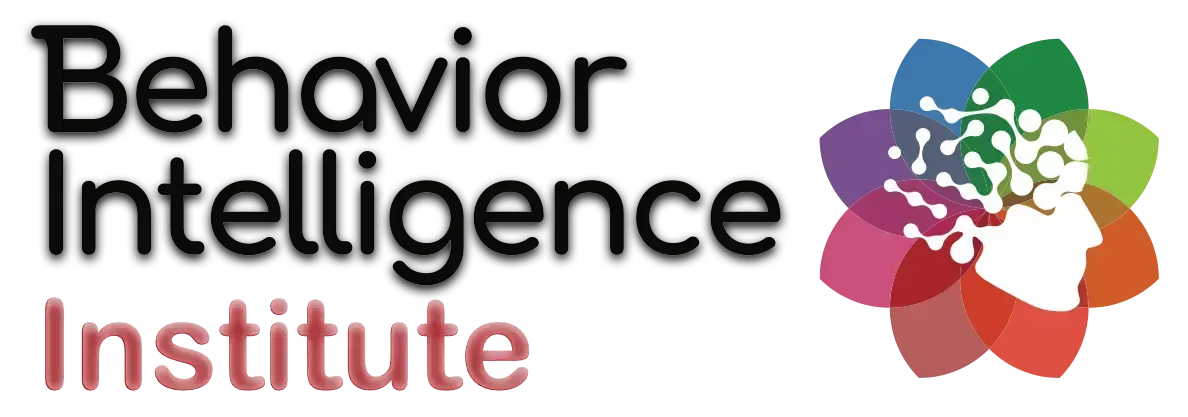Blog
Categories

Motivational Intelligence: Understanding What Truly Drives Performance
What drives performance isn’t what most people think.
Over the years, I’ve seen leaders pour their energy into new tools, stricter processes, more incentives, and endless team-building sessions — all in the hope of solving performance problems. But the truth is, those are often just Band-Aids.
The real engine of performance lives below the surface. If we only address visible behaviors, we end up treating symptoms, not causes. That’s where Motivational Intelligence comes in.
This is a framework I use consistently in leadership and behavior intelligence work — a way to make the invisible visible, to uncover the why behind the what. When we understand what truly drives people, performance improves naturally and sustainably.

Looking Beneath the Surface
When something goes wrong in a team, most leaders react to the behavior they can see:
A team misses deadlines, so they tighten tracking and reporting.
People resist feedback, so they add more check-ins.
Engagement drops, so they bring in motivational speakers.
Collaboration suffers, so they schedule another team-building retreat.
None of these actions are inherently bad — but they don’t solve the real problem.
These responses treat the visible layer of behavior — the part above the waterline. But like an iceberg, what you see is only 10% of the whole picture. The other 90% is made up of drivers that are hidden: values, beliefs, fears, needs, habits, and unconscious patterns.
That hidden 90% is what truly determines how people show up at work.
The Brain’s Hidden Operating System
Our brains are wired for survival and efficiency. That wiring shapes behavior in powerful, often invisible ways:
Dopamine reinforcement: The brain rewards familiar actions with a chemical hit. Even unhelpful habits can get reinforced if they provide short-term satisfaction or safety.
Fight-or-flight response: When the brain perceives a threat, the amygdala takes over, the logical prefrontal cortex shuts down, and we lose our ability to process information rationally.
Automatic patterns: The brain is lazy by design. It prefers to repeat what’s familiar — even if it isn’t effective — because it’s faster and safer.
This means people often behave in ways that make perfect sense to their brain even if those behaviors appear irrational to everyone else. Understanding this is crucial if you want to lead intelligently.

Why Curiosity Beats Judgment
When behaviors don’t make sense on the surface, most leaders default to judgment:
“They’re unmotivated.”
“They don’t care.”
“They’re resistant.”
“They’re negative.”
But what if, instead of judging, we got curious? What if we asked better questions?
This is where one of my favorite tools comes in — The Three Whys.
Why did that happen?
→ This helps you understand the immediate layer of motivation.Why was that important?
→ This gets you closer to the underlying driver.Why does it matter to you?
→ This reveals the real engine — what the person truly values or fears.
When “why” feels too direct or triggering, you can use “what” instead.
For example:
“What about that situation mattered to you?”
“What does that mean for you?”
“What happens for you when that occurs?”
The key is to understand, not interrogate. Once you uncover the why, you can design far better solutions.
Every Behavior Serves a Need
Here’s a foundational truth I’ve observed again and again:
Every habit is an intelligent attempt to meet a need.
When someone behaves in a certain way — even if it’s counterproductive — it’s usually the best strategy they know to satisfy a core need.
Some common examples:
Sending late-night emails → a need for recognition or visibility.
Avoiding difficult conversations → a need for safety or harmony.
Over-preparing for a presentation → a need for respect or a fear of rejection.
Volunteering for everything → a need for significance or belonging.
These behaviors may seem illogical on the surface, but when you understand the need underneath, they make perfect sense. And once you see that need, you can work with it rather than against it.
The SCARF Framework: A Lens on Human Needs
To understand those hidden needs, I often use the SCARF framework, developed through research on social neuroscience. It identifies five key drivers that influence motivation:
Status – The need to feel valued and important.
Certainty – The need for predictability and clarity.
Autonomy – The need for control over decisions and work.
Relatedness – The need for connection and belonging.
Fairness – The need for equity and respect.
When any of these needs are threatened, people unconsciously defend themselves. When they’re supported, people flourish.
Understanding SCARF lets leaders design environments that meet these needs proactively — creating trust, engagement, and performance without pushing harder or micromanaging.

Leadership Blind Spots: When We Misread Motivation
One of the biggest mistakes I see leaders make is misinterpreting behaviors.
Here are some common blind spots I’ve seen over decades of leadership coaching:
“They just need more money.”
In reality, most people value safety, purpose, and growth more than financial incentives alone.“They’re quiet, so they’re disengaged.”
Quiet people may be processing information deeply. Their engagement may look different.“Resistance equals laziness.”
More often, resistance comes from uncertainty or lack of clarity, not apathy.“High performers don’t need support.”
Some of the highest performers are driven by insecurity. They may be the ones who need support the most.“Motivation is fixed.”
Motivation evolves over time. People’s needs shift as their circumstances change.
These blind spots can cost teams trust, productivity, and innovation. Motivational intelligence allows us to see past them and respond intelligently.
Reframing Difficult Behavior as Intelligent Problem-Solving
Here’s a mindset shift that changes everything:
Every action is an intelligent attempt to solve a problem.
When someone interrupts a meeting, overcommits, or avoids feedback, they’re not “being difficult.” They’re solving their own problem the best way they know how.
For example:
A team member who interrupts may be seeking clarity or influence.
A perfectionist may be trying to avoid criticism.
Someone who overcommits may be seeking to prove their worth.
Once we stop labeling people and start diagnosing needs, we can collaborate on better strategies.
The Deconstruct Method: Turning Conflict into Collaboration
To work through challenging behaviors effectively, I use what I call the Deconstruct Method — a simple but powerful 4-step process:
Describe
Identify the observable behavior or pattern without judgment.
Explore
Get curious. What’s really going on here? What might this behavior be solving?
Understand
Reflect on both your motivations and theirs.
Co-Create
Collaboratively design a new strategy that meets the underlying need in a healthier, more effective way.
This moves conversations away from blame and toward joint problem-solving. Even simple shifts, like moving from face-to-face confrontation to side-by-side collaboration (e.g., using a whiteboard together), can dramatically change the energy in the room.
A Real Example: The Meeting Interrupter
Let me share a practical example.
David, a technical team member, frequently interrupted his colleagues in meetings. It frustrated everyone — they felt disrespected and derailed.
But when we deconstructed the behavior, we found that David wasn’t trying to be difficult. He was simply a detail-oriented thinker who saw risks others missed. Interrupting was his way of ensuring nothing slipped through the cracks.
Instead of labeling him, we co-created solutions:
Pre-meeting debriefs so he could process details early.
Built-in pauses between topics to let him ask questions.
A signaling method (raising a hand, note-taking) to minimize interruptions.
The behavior shifted, trust increased, and meetings became more productive. The key wasn’t punishment — it was understanding the need beneath the action.
Changing Patterns by Meeting Needs
Once you identify the need behind a pattern, you can design healthier strategies.
Take another example:
Pattern: Someone checks their email every 10 minutes.
Need: Certainty and control.
New strategy: Scheduled email checks, status dashboards, and clarity on priorities.
Outcome: The need for certainty is met without constant distraction.
This is what motivational intelligence looks like in practice: not forcing change, but making better solutions available.
Common Misdiagnoses and the Real Drivers Behind Them
To close the loop, here are some of the most common misdiagnoses I see in organizations — and what’s usually hiding underneath:
“They lack motivation.” → Often, we’re using the wrong motivators.
“They resist change.” → Their core needs feel threatened.
“They don’t care about quality.” → Competing priorities are at play.
“They’re negative.” → Past disappointments or unmet needs may be driving that attitude.
When you shift your focus from surface behavior to underlying motivation, you lead smarter — and your team responds differently.
Tools You Can Use Right Away
If you want to start applying Motivational Intelligence today, here are practical steps you can take:
Ask Three Whys (or Whats) to uncover real motivations.
Use SCARF to map and meet people’s core needs.
Apply the Deconstruct Method to turn friction into collaboration.
Reframe behaviors as intelligent strategies, not personal flaws.
Adjust the environment to support better behaviors instead of trying to “fix” people.
Motivation isn’t static. It evolves as people and circumstances evolve. When leaders understand this, they stop pushing and start enabling.

Final Thoughts: Leading Through Understanding, Not Control
Every behavior is a strategy someone uses to meet a need.
When you as a leader can see beyond the surface and work with those needs, performance improves naturally. Engagement rises. Trust deepens. Pressure eases.
This isn’t about manipulation — it’s about understanding what drives people and creating conditions where both the individual and the team can thrive.
This is the heart of Motivational Intelligence.
When you stop treating symptoms and start addressing the engine, leadership becomes less about control and more about collaboration and impact.
Take the Next Step
If this resonates with you and you want to build Motivational Intelligence into your leadership practice or organization:
👉 Join one of our masterclasses to learn these tools in depth.
👉 Connect with me at BIQOrg.com to explore training and programs for your team.
👉 Start with one person, one conversation, and see the shift for yourself.
Let’s stop patching symptoms — and start leading intelligently.
Copyright 2021 AccuMatch Behavior Intelligence is a division of NLP Profiles Inc. | Privacy Policy



